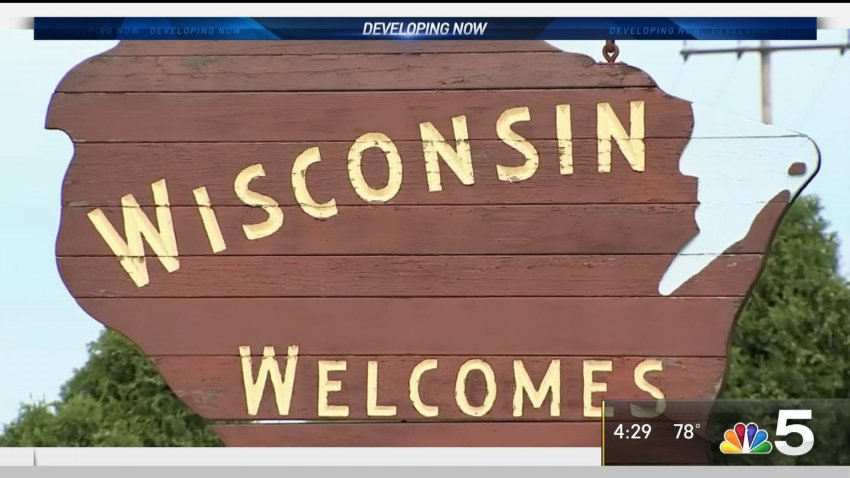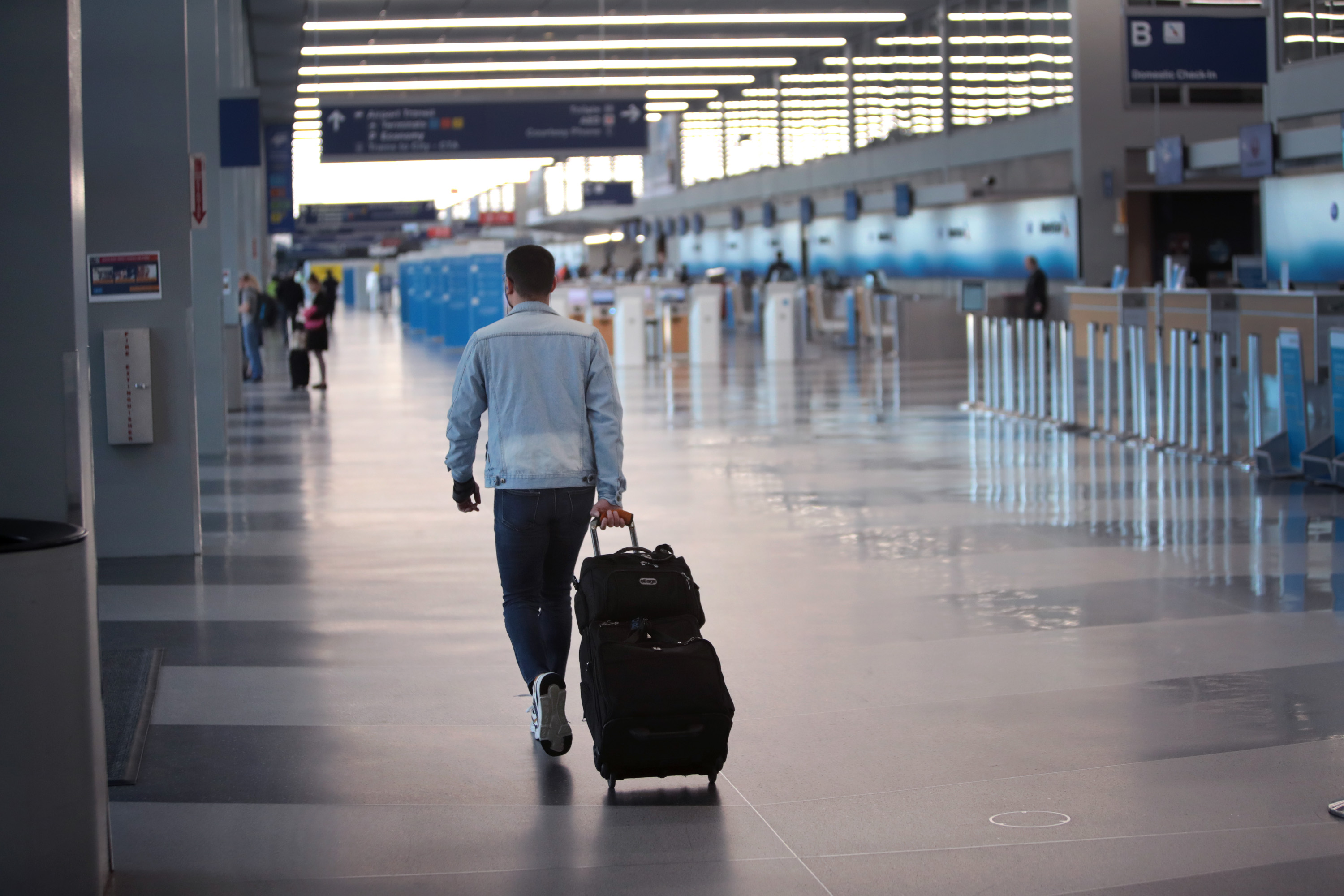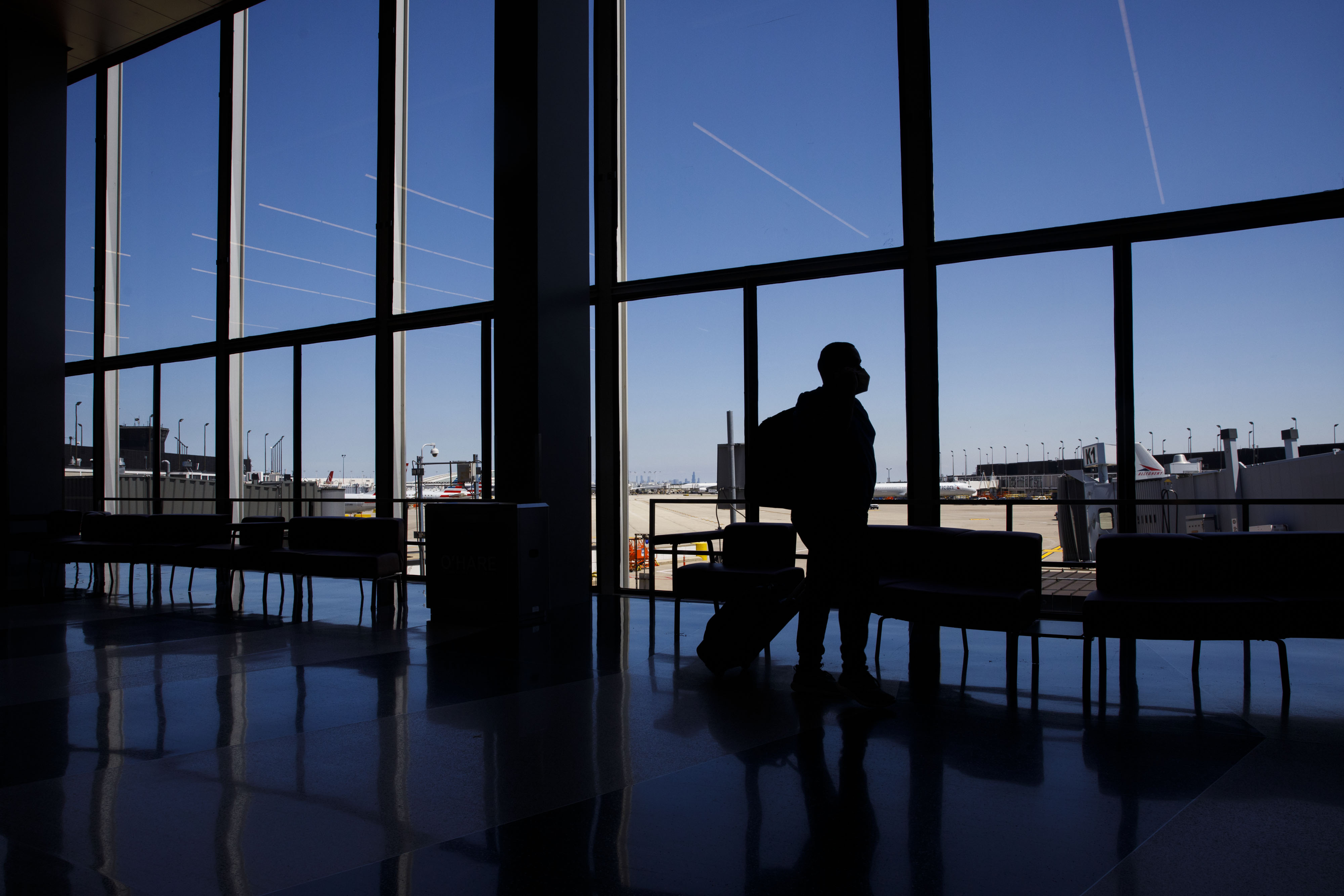Wisconsin was one of several locations added Tuesday to Chicago’s emergency travel order requiring a 14-day quarantine.
Wisconsin was one of several locations added Tuesday to Chicago's emergency travel order requiring a 14-day quarantine.
The northern neighboring state was joined by Montana, Idaho, Minnesota and Puerto Rico on the city's quarantine list. Kentucky and Louisiana were removed, leaving the total number of locations on the list at 19.
Chicago Department of Public Health Commissioner Dr. Allison Arwady had previously warned last week that Wisconsin had reached the threshold for inclusion and would likely be included in the next update.

Arwady said Tuesday that Wisconsin was "currently in very poor control when it comes to COVID," adding that the state has more than double the average daily cases per 100,000 residents than what is required to be named on Chicago's travel order.
The positivity rate in testing in Wisconsin stood at 16% as of Monday, state health officials said, with the trendline rising sharply.
For the 10th day in a row, Wisconsin broke its own record for average daily new cases, picking up more than 1,200 new cases on Monday. Last week, the state had multiple days where more than 2,000 new cases were reported each day.
"Certainly we are watching Wisconsin with huge concern," Arwady said last Tuesday. "They had their highest ever number of cases of COVID reported last Thursday, they had percentage positivities in the 13% to 17% range."
Arwady said that while data indicated the state should added to the order, the city held off on its inclusion because officials recognized that "people need time for planning."
Under the guidelines, those traveling to or from Wisconsin for work and those traveling through the state for travel will not need to quarantine, Arwady said. Those traveling to the state for leisure, however, even for less than 24 hours, will need to quarantine, she said.
Last week, Chicago's quarantine list dropped to 16 states when Florida, Idaho, North Carolina, Texas, Hawaii and Nevada were all removed and Utah added.
States are added to the list if they have "a case rate greater than 15 new COVID-19 cases per 100,000 resident population, per day, over a 7-day rolling average." If they fall below that threshold, they could be removed as well.
Chicago's travel order, which began on July 6, is evaluated every Tuesday, with any additions taking effect the following Friday.
The states currently included are: Alabama, Arkansas, Georgia, Idaho, Iowa, Kansas, Minnesota, Mississippi, Missouri, Montana, Nebraska, North Dakota, Oklahoma, South Carolina, South Dakota, Tennessee, Utah and Wisconsin. Puerto Rico is also on the list.
Arwady said travelers entering or returning to Chicago from "states experiencing a surge in new COVID-19 cases" will need to quarantine "for a 14-day period from the time of last contact within the identified state." Essential workers could be exempt from the quarantine requirement, however, as long as their employer certifies their work in writing.
The order is set to remain in effect until further notice.
New York and New Jersey are also asking visitors from several states, including Illinois, to quarantine themselves for two weeks.
Still, outside of Chicago, Illinois Gov. J.B. Pritzker said the state likely won't require residents who travel to and from neighboring states to quarantine for two weeks solely because of that travel.
But Illinois' Department of Public Health did release a "travel map" indicating which states are a "higher risk" for travelers.
The state's map uses the same criteria as Chicago's travel order for determining the states that are deemed to be an increased risk.
“Travel may increase the chance of becoming infected and spreading COVID-19,” IDPH Director Dr. Ngozi Ezike said in a statement. “To help inform residents where they might be at greater risk of being exposed to COVID-19 when they travel, IDPH has launched a map that clearly shows states and other countries where case rates are elevated. While staying home is the best way to protect yourself and others from COVID-19, we know that it may not be possible to avoid all travel. We encourage people who are traveling, whether for work or otherwise, to check out the map before making plans.”



